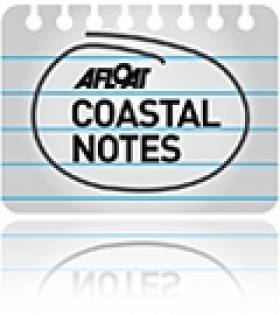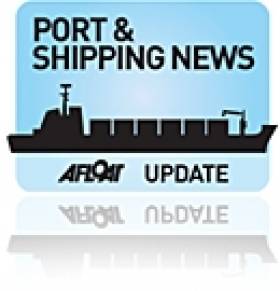Displaying items by tag: Menai Straits
Round Anglesey Cruise
#ROUND ANGLESEY CRUISE – A 'Round Anglesey' cruise operated by Waverley Excursions and served by Balmoral (1949/688grt) is scheduled a month from today as part of the season of excursions, writes Jehan Ashmore.
The cruise circumnavigation of the Isle of Anglesey on 18th June starts from the Menai Bridge Pier. From there the veteran vessel passes the famous Menai Bridge on one of the UK's spectacular island circuits. An en route call is to Caernarfon with its impressive Norman castle.
As the Balmoral reaches open waters, one of the cruise highlights is the approach to South Stack on Holy Island with wildlife swirling above and nearby the ferryport of Holyhead. Further along the Welsh mountains come into view and in the distance the backdrop of Snowdonia. The stripy lighthouse on Puffin Island marks the northern approaches of the straits bringing the cruise towards a full circle.
On board are two lounge bars and where snacks are available during the six-hour cruise returning to the Menai Bridge. From there passengers transfer by coach on a half hour journey to Caernarfon. For further information and more click HERE.
Balmoral was originally a Red Funnel vessel based out of Southampton on the route to the Isle of Wight. She could also handle cars that were craned on-board her aft deck. The vessel later became the last of the P&A Campbell famous White Funnel fleet running passengers excursions on the Bristol Channel until they ceased operations in 1980.
The next stage in her career was as a floating restaurant in Dundee. The venture was unsuccessful and the vessel gradually fell into disrepair, until she was rescued by the friends and supporters of the paddle steamer P.S. Waverley.
Former New York ferry cruises Menai Straits
The vessel departed Caernarfon and passed under the famous Telford Suspension road bridge and Britannia railway bridge. In addition the cruise provided viewing opportunities of Snowdonia and beyond. After several hours the vessel returned to the county town of Gwynedd with its impressive castle.
Interestingly, the Queen of the Seas was originally built for service in a career serving on the far side of the Atlantic Ocean, as a New York ferry plying the River Hudson. The 92-passenger capacity ferry was sold to European owners in 1941 and was transported across the Atlantic onboard another vessel.
In recent years, there have been similar cruises on the Menai Staits operated by the Waverley Excursions Ltd, Bristol-based Balmoral which has transited through the narrow strait with its notorious dangerous currents.






























































